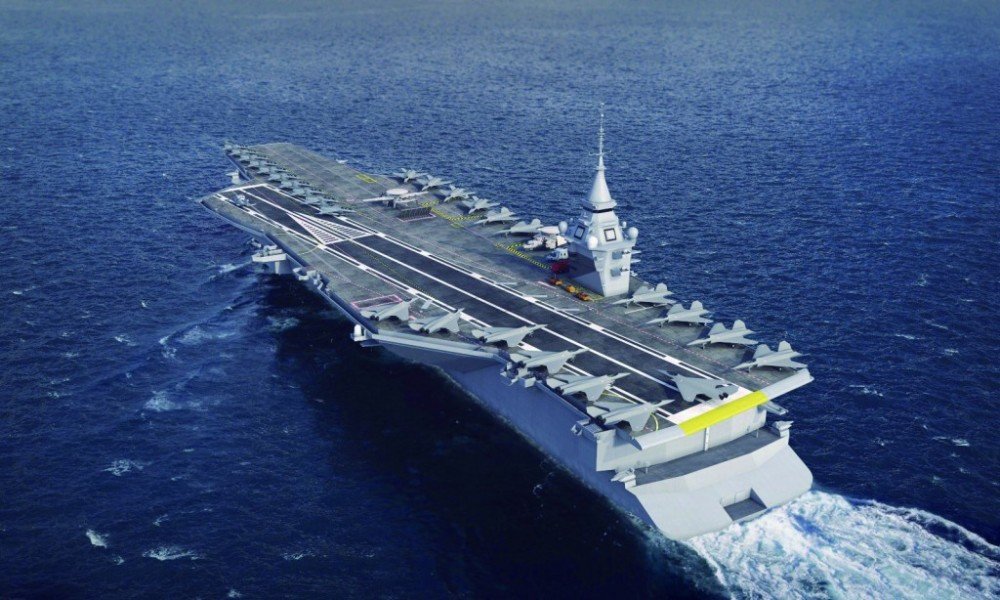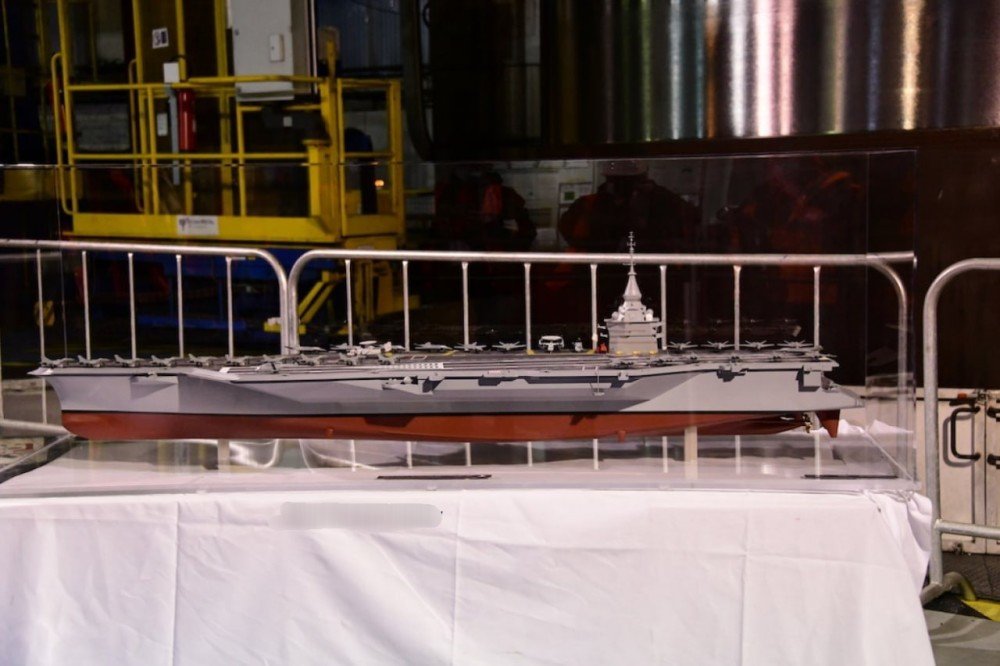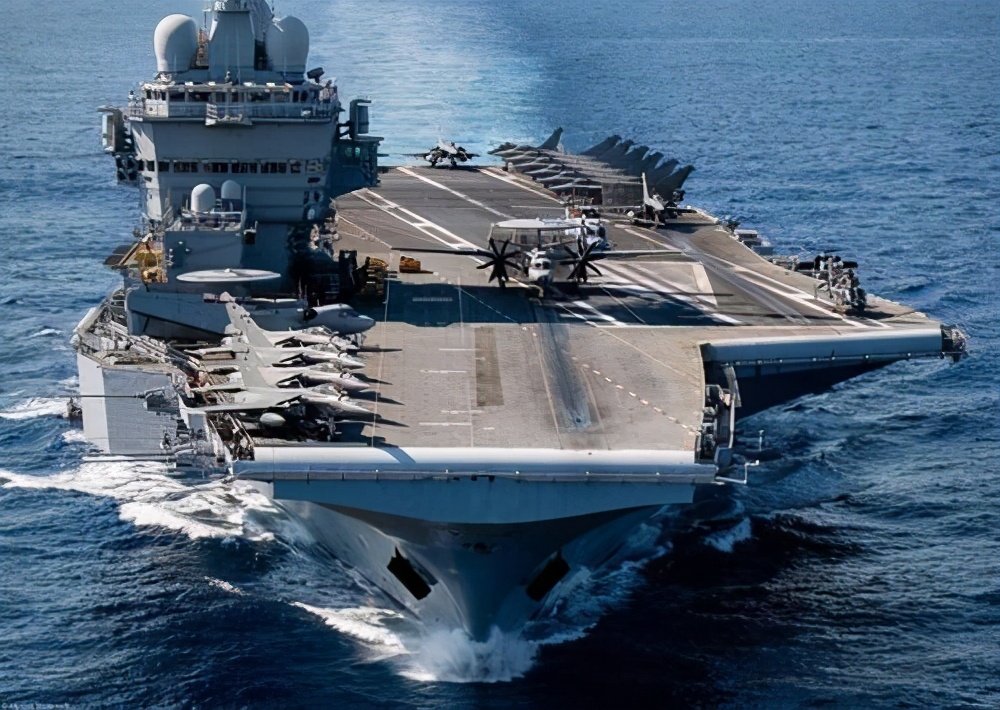Global Network reported on December 10 that French President Emmanuel Macron announced to the outside world that France has planned to develop and build a new generation of nuclear-powered aircraft carriers when visiting French Framatome, one of the world’s largest nuclear reactor manufacturers.
According to Macron, the French new-generation aircraft carrier will have a tonnage of 75,000 tons, and it plans to replace the “Charles de Gaulle” currently in service in the French Navy in 2038.

French future aircraft carrier vision
France is currently the only country in the world with a nuclear-powered aircraft carrier besides the United States. However, the road to nuclear-powered aircraft carriers in France is not smooth.
The French Navy’s current aircraft carrier “Charles de Gaulle” started construction as early as April 1989. The original plan was to replace the French Navy’s “Clemenceau” aircraft carrier in 1996. But it was not officially delivered to the French Navy until 2001.
What’s more embarrassing is that the cost of the ship’s construction was severely overrun. The original budget was 4 billion U.S. dollars, and finally soared to nearly 8 billion U.S. dollars.
France originally planned to build two “Charles de Gaulle” class aircraft carriers to replace the “Clemenceau” and “Foch”, but in the end “De Gaulle” used up the entire budget of the two aircraft carriers, and the second ship “Richelieu” had to be abandoned.

French future aircraft carrier model French future aircraft carrier model
The French seriously underestimated the difficulty of developing nuclear-powered aircraft carriers, and at the same time seriously overestimated their own technological accumulation in ship nuclear power.
The “De Gaulle” aircraft carrier directly used the K-15 nuclear reactor of the “Triumphal” class strategic missile nuclear submarine. As a result, the French Navy fell into this “pit” and could not get out.
K-15 is a submarine reactor, and the power of a single unit is insufficient. Initially, the “De Gaulle” aircraft carrier planned to install 4 K-15 reactors, but later due to lack of space in the hull, it had to be replaced with 3 nuclear reactors, which resulted in a serious shortage of power on the “De Gaulle” aircraft carrier.
During its nearly 20 years of service, the Charles de Gaulle can only go to 25 knots at its highest speed and is known as the world’s “slowest” aircraft carrier.
The Charles de Gaulle aircraft carrier not only has a slow speed, but also has major flaws in its design.
First, the front of the ship island causes inconvenience to the command and dispatch of the aviation tower, and the front of the ship island occupies a large on-board parking area, which affects aviation operations. Second, the design of the aircraft carrier was unreasonable.
Because the original design did not match the US-made C-13-3 steam catapult, it had to go back to the port and increase the angled deck by 2 meters to ensure that the E-2C early warning aircraft could fly in Charles de Gaulle. Take off safely on board.
Now the US and British navies have begun to equip the F-35B/C two fifth-generation stealth fighters, and China’s stealth carrier-based fighters have also been listed on the agenda. It is expected to appear at the same time as the domestically produced aircraft carrier No.
003, while the French Navy is still using the four Although a half-generation Rafale fighter jet is more advanced than most other countries in the world, it lags behind major powers such as China and the United States.
According to the general classification rules of the modern navy, aircraft carriers of less than 40,000 tons are called light aircraft carriers, those of 40,000 to 60,000 tons are called medium-sized aircraft carriers, those of 60,000 to 80,000 tons are called large aircraft carriers, and those of more than 80,000 tons Call it a super aircraft carrier.
The French new-generation nuclear-powered aircraft carrier of 75,000 tons is a properly large aircraft carrier.
The new-generation French aircraft carrier has almost doubled the displacement of the “De Gaulle”, so it is also dubbed the “XXL aircraft carrier” by the French media.
The reason why such a large tonnage is needed is because the fighters it carries are different. According to public reports, the new aircraft carrier that France plans to build will be equipped with a newly developed stealth fighter. This brand-new fighter has a maximum take-off weight of 30 tons, far exceeding the active Rafale fighter.
At the same time, the new aircraft carrier will also be equipped with a brand-new nuclear power plant. The power will be increased from 150 megawatts of the “De Gaulle” single machine to 220 megawatts. There will no longer be the embarrassment of the “De Gaulle” that cannot run.

In general, the new aircraft carrier completely crushes the French carrier “De Gaulle” in basic design parameters. But France still has a problem: Due to financial constraints, the number of new aircraft carriers to be built is locked at one.
Since the end of World War II, France has been pursuing the “two ocean strategy”, which means deploying one aircraft carrier in the Atlantic Ocean and the Mediterranean Sea. The problem of the “De Gaulle” aircraft carrier has caused France to have only one aircraft carrier available for a long time.
Therefore, not only the French army has a long aircraft carrier “window period” at sea, but also the previous “two ocean strategy” cannot be effectively maintained. This is for France The maritime defense is a serious weakening.
However, France’s current financial situation is really difficult to support the daily operations of the two large aircraft carriers. In the United Kingdom, which has a better economy than France, both of the 65,000-ton class aircraft carriers have planned to seal up one.
The United Kingdom or conventional aircraft carriers have lower construction and use costs than nuclear-powered aircraft carriers. The predicament of France can be imagined.
Therefore, there is something that is not very pleasant: France’s ambition can hardly cover the weakness of its lack of national strength.



